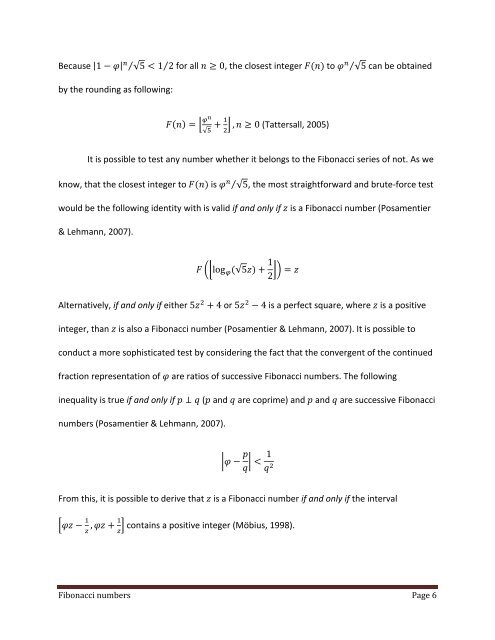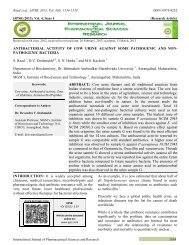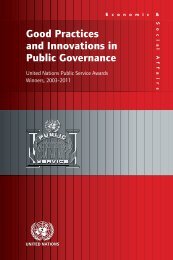fibonacci-numbers
fibonacci-numbers
fibonacci-numbers
You also want an ePaper? Increase the reach of your titles
YUMPU automatically turns print PDFs into web optimized ePapers that Google loves.
Because |1 | ⁄ √5 1⁄ 2for all 0, the closest integer to ⁄ √5 can be obtained<br />
by the rounding as following:<br />
<br />
, 0 (Tattersall, 2005)<br />
√ <br />
It is possible to test any number whether it belongs to the Fibonacci series of not. As we<br />
know, that the closest integer to is ⁄ √5, the most straightforward and brute‐force test<br />
would be the following identity with is valid if and only if is a Fibonacci number (Posamentier<br />
& Lehmann, 2007).<br />
log √5 1 <br />
2<br />
Alternatively, if and only if either 5 4 or 5 4 is a perfect square, where is a positive<br />
integer, than is also a Fibonacci number (Posamentier & Lehmann, 2007). It is possible to<br />
conduct a more sophisticated test by considering the fact that the convergent of the continued<br />
fraction representation of are ratios of successive Fibonacci <strong>numbers</strong>. The following<br />
inequality is true if and only if ( and are coprime) and and are successive Fibonacci<br />
<strong>numbers</strong> (Posamentier & Lehmann, 2007).<br />
1 <br />
From this, it is possible to derive that is a Fibonacci number if and only if the interval<br />
, contains a positive integer (Möbius, 1998).<br />
<br />
Fibonacci <strong>numbers</strong> Page 6









